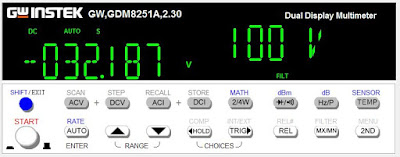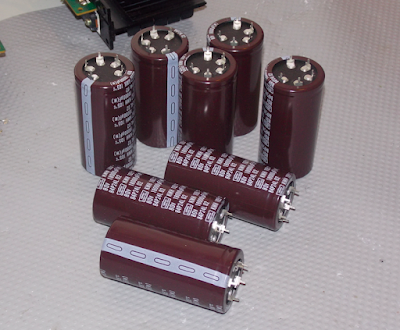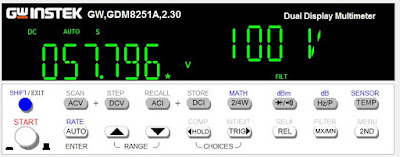Two Pioneer SA-9800 Integrated Amplifiers
Released from 1976-81, the SA-9800 was Pioneers TOTL integrated amplifier approach employing the proprietary NSA (Non-Switching Amplifier) concepts which used the unique RET’s (Ring Emitter Transistors.) The SA-9800 used a Fluoscan peak meter for output monitoring with a FL tube display and a precision stepped attenuator. The complex RIAA also allowed for multiple TT’s with variable input factors! One of these units has a almost NOS in pristine un-used condition and the other had heavy time and prior work that had to be redone.
AWR-194 Power Supplies
The SA-9800 has a robust power supply build featuring monolithic -/+B supplies with separate transformers for better isolation and noise reduction. The AWR assembly employs a full wave bridge rectifier for the regulated -/+B supplies with FET/zener/regulator design and a single half wave rectifier AC source. Their are suitable differences in the AWR-191 PS Euro design)
To address some of the heat dissipation problems, more robust, modern TO-220 regulators were installed with new synthetic Wakefield thermal compound. Remaining devices were replaced with modern, low noise TO-92/TO126 Fairchild devices. All rectifier didoes were replaced with state-of-the art Hex Fred axial Ultra-fast, Soft Recovery diodes and new 17/6V zener diodes installed. The associated 330OHM dropping resistor is replaced with a higher current rated MOX type.
All of the capacitors were replaced with low impedance, high temp (105C) Nichicon PW type, with axial replacements being high grade Sprague Atom axial capacitors, all with an increase in operating voltage. New Bypass films were installed with high grade ECW polypropylene film capacitors.
BEFORE
AFTER
Regulated -/+ Rails
AWR-192 Rectification Assemblies
The separate driver main -/+ Dual B rails are established with independent transformers and two full wave bridge 3A rectifiers and four total 18,000MFD filter capacitors. As you can see on one of the assemblies some "tech" had removed all the axial diodes and such replaced the half hazard foil or top side...
The entire full wave bridges were replaced with state-of-the art Hex Fred axial Ultra-fast, Soft Recovery diodes and new high grade ECW polypropylene film capacitors. Each units four filter capacitors were replaced with a computer grade CDE Nippon Chem-Con 18,000MFD filter capacitors.
BEFORE
AFTER
-/+B Rails Confirmation
AWV-002 Indicators
The SA-9800 peak display is driven by a FL (Fluorescent) type tube, the more time a tube has, the more it wears and fades, this is a natural progression of FL tubes. One important notation is the TA7318P dual display IC, this IC is extremely sensitive to ESD and all precautions must be taken when handling or damage of the interior detector circuit will result. Interesting enough the NOS unit arrived with a DOA TA device!
The AWV operates with a output applied to a low pass filter/compressor network then via the TA7318, a wide range peak indicator IC, then driven to the FL via two monolithic HA12010 IC’s.
All the electrolytic capacitors were replaced with a low impedance, high temp (105C) Nichicon PW type with an increase in operating voltage. Ceramic and mylar films were all replaced with precision/high grade WIMA series polypropylene film capacitors. The adjustments were replaced with seal/precision Bourns potentiometers. One unit received a NOS toshiba TA7318P IC from our preferred distributor.
BEFORE
AFTER
AWM-163 Protection Assemblies
The protection assembly features a two way protection design by engaging during regular on/off operation and the detection of dc deviation at the output.
All the electrolytic capacitors were replaced with a low impedance, high temp (105C) Nichicon PW type with an increase in operating voltages. All of the small signal devices were replaced with modern, low noise TO-92L Fairchild devices with better dissipation. Zener diodes were replaced with modern axial type. Relays were replaced with 48V indicator type Omron My series relays.
BEFORE
AFTER
AWG-124 Flat Amp & GWS-176 Filter Assemblies
Like much of the front end audio stages in the SA-9800 the tone stage employs a FET dual differential with a cascade PNP differential pair and emitter output DC coupled design. A Bass/Treble control is featured with a frequency range cut-off mode. The proximal gain control is a high quality sealed, stepped attenuator.
All of the small signal devices were replaced with modern, low noise TO92 Fairchild devices, including beta matched differential pairs.
Flat Amp Beta Matched Dif/Pairs
All electrolytic were replaced with a audio grade KT/KA and audio grade MUSE Bipolar Nichicon’s with an increase in operating voltages. Ceramic/mylar coupling/bypass capacitors were replaced with a high grade WIMA polypropylene film capacitors.
BEFORE
AFTER
In the GWS-176 Filter Assemblies all electrolytic were replaced with a audio grade KT/KA Nichicon’s with an increase in operating voltages. Ceramic/mylar coupling/bypass capacitors were replaced with a high grade WIMA polypropylene film capacitors.
BEFORE
AFTER
GWF-116 RIAA/Head Amp Assemblies
The SA-9800 has an excellent, though overly complex phono design employed. The SA-9800 can accept both MC/MM carts with variant input capacitance and resistance levels making it extremely versatile. (and a VERY smartly designed RF interference filter in situ)
The MC amp has a voltage gain of 28dB via a 3-stage symmetric, DC-coupled concept. The EQ/MM output stage uses a FET differential front end with a cascade current mirror, a class-A voltage gain stage with constant current source and a symmetrical SEPP class A output.
Cascade pairs and differentials were beta matched and replaced with modern, low noise Fairchild devices. New adjustments were installed with sealed/precision Bourns potentiometers.
RIAA Beta Matched Dif/Pairs
All the electrolytic capacitors (and their are a TON in this stage) were replaced with low impedance Nichicon PW’s with an increase in operating voltages as well as audio grade BP MUSE Bipolar capacitors. Ceramic and mylar were upgraded to high grade WIMA polypropylene film capacitors.
BEFORE
AFTER
RIAA Curve Response
GWH-119/120 Driver (PA) Assemblies
The SA-9800 and several others featured Pioneers NSA (Non-Switching Amplifier) design, described as; operating the power stage within the active region with the minimal achieved idle current preventing switching distortion and dissipation efficiencies.
The core driver design starts with an initial differential gain stage and current mirror in a PP mode operation, pre-drivers are in a darlington array voltage gain stage and NSA controlled bias scheme. The power stage is a two point darlington array with a SEPP output stage using super-linear ring emitter transistors.
All of the differential and cascade pairs were beta matched, with pre-driver and drivers also replaced using modern, low noise Fairchild devices, new regulators had new synthetic thermal compound applied. Adjustments were all replaced with precision, sealed Bourns potentiometers.
Driver Stage Beta Matched Dif/Pairs
Electrolytic capacitors were replaced with audio grade KT/KA and low impedance PW Nichicons with an increase in operating voltage. Mylar were replaced with a high grade WIMA polypropylene film capacitors.
BEFORE
AFTER
Bias Confirmation (per driver X2 per unit)
Hardware
New 5-Way Insulated Binding posts with complete substrates were installed on both units, replacing the original speaker cable receptacles.
AUDIO NOTIZEN



































































































You have done a great job.
ReplyDeleteRoyalyouth
Hi Noah, I have to say you have done a super excellent job refurbishing both of these amplifiers. I have been traveling a bit since I came over to pick them up, but finally have had a chance to sit and listen to some enjoyable music coming through my vintage JBL 4412s and Pioneer HPM 1500s. Like you mention in the beginning these were TOTL integrated amps when Pioneer sold then in "78" - "80" and with your updates and upgrades these babies sing with clarity and nice soundstage. The upgraded speaker outputs have saved me time, as I had to move my whole system around a few times to get the best placement, and the banana plug wires are quicker to change out. I had to wait longer than expected, but it was worth the wait and I am very happy with the results. I look forward to meeting up with you again soon when the SPEC amps are ready for pickup.
ReplyDeleteBest regards,
Dan